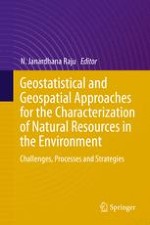2016 | OriginalPaper | Buchkapitel
46. Textural Variation of Sediments in the Course of a Small River: A case study from Khurar River, Khajuraho, Chhaterpur District, Madhya Pradesh, India
verfasst von : S. Kanhaiya, B. P. Singh
Erschienen in: Geostatistical and Geospatial Approaches for the Characterization of Natural Resources in the Environment
Aktivieren Sie unsere intelligente Suche, um passende Fachinhalte oder Patente zu finden.
Wählen Sie Textabschnitte aus um mit Künstlicher Intelligenz passenden Patente zu finden. powered by
Markieren Sie Textabschnitte, um KI-gestützt weitere passende Inhalte zu finden. powered by
